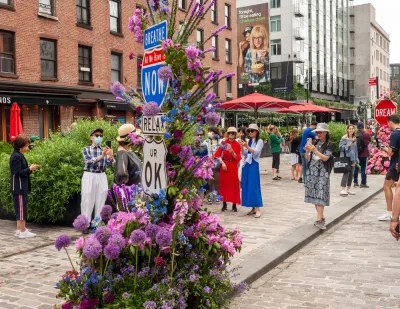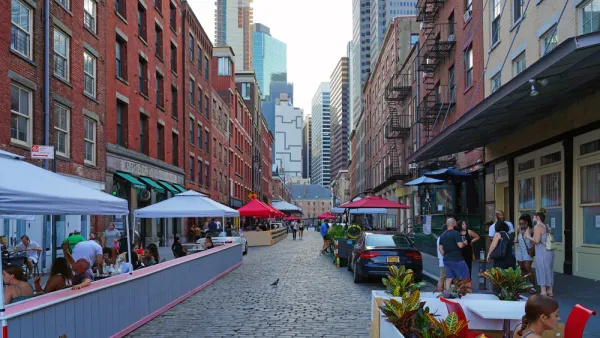Once a promising development for advocates pushing for a less car-centric future in cities, the open streets movement has ceded significant ground to cars since the height of the pandemic.

Winnie Hu reports for the New York Times about the slow retreat of New York City’s Open Streets initiative:
The city’s Open Streets initiative, which bans or restricts traffic at designated hours up to seven days a week year-round, became one of the few bright spots during the pandemic. But two and a half years later, this ambitious experiment has turned out to be much harder to maintain than expected.
The proof is in the numbers: Former Mayor Bill de Blasio targeted 100 miles of open streets and made the program permanent in September 2020. The program peaked at 83 miles, but there are now only 20 miles of open streets in the city. “Manhattan has the most open streets, with 8.8 miles, followed by Brooklyn, with 7.6 miles, and Queens, three miles. The Bronx and Staten Island each has less than a half-mile,” writes Hu.
The narrative arc of New York's Open Streets program mirrors a retreat by a planned expansion of bus priority around the city. The de Blasio administration promised a 20 miles of bus priority lanes in June 2020, just to retreat from that planned scale as the calendar changed months, and years—just another pandemic-era initiative that could have turned the tide against car-centric planning in the public realm.
As noted by Hu, open streets programs have had a hard time hanging on in cities all over the country: “Oakland, Calif., which set a national standard with its temporary, pandemic-era “slow streets,” phased them out this year, while nearby Berkeley wound down its “healthy streets” last year. Chicago replaced its “shared streets” with other initiatives, including expanded outdoor dining and a series of one-day open boulevards.”
The source article below documents the political pushback from drivers that has managed to reverse the Open Streets trend, as well as some of the planning challenges that still surround open streets programs, such as trash collection, programming, and equity. There are also examples of “breakout successes” to offer, including 34th Avenue in Queens, Vanderbilt Avenue and Berry Street in Brooklyn, and Dyckman Street in Manhattan, according to Hu.
FULL STORY: How New York City Lost 63 Miles of Pedestrian-Friendly ‘Open Streets’

National Parks Layoffs Will Cause Communities to Lose Billions
Thousands of essential park workers were laid off this week, just before the busy spring break season.

Retro-silient?: America’s First “Eco-burb,” The Woodlands Turns 50
A master-planned community north of Houston offers lessons on green infrastructure and resilient design, but falls short of its founder’s lofty affordability and walkability goals.

Delivering for America Plan Will Downgrade Mail Service in at Least 49.5 Percent of Zip Codes
Republican and Democrat lawmakers criticize the plan for its disproportionate negative impact on rural communities.

Test News Post 1
This is a summary

Test News Headline 46
Test for the image on the front page.

Balancing Bombs and Butterflies: How the National Guard Protects a Rare Species
The National Guard at Fort Indiantown Gap uses GIS technology and land management strategies to balance military training with conservation efforts, ensuring the survival of the rare eastern regal fritillary butterfly.
Urban Design for Planners 1: Software Tools
This six-course series explores essential urban design concepts using open source software and equips planners with the tools they need to participate fully in the urban design process.
Planning for Universal Design
Learn the tools for implementing Universal Design in planning regulations.
EMC Planning Group, Inc.
Planetizen
Planetizen
Mpact (formerly Rail~Volution)
Great Falls Development Authority, Inc.
HUDs Office of Policy Development and Research
NYU Wagner Graduate School of Public Service




























